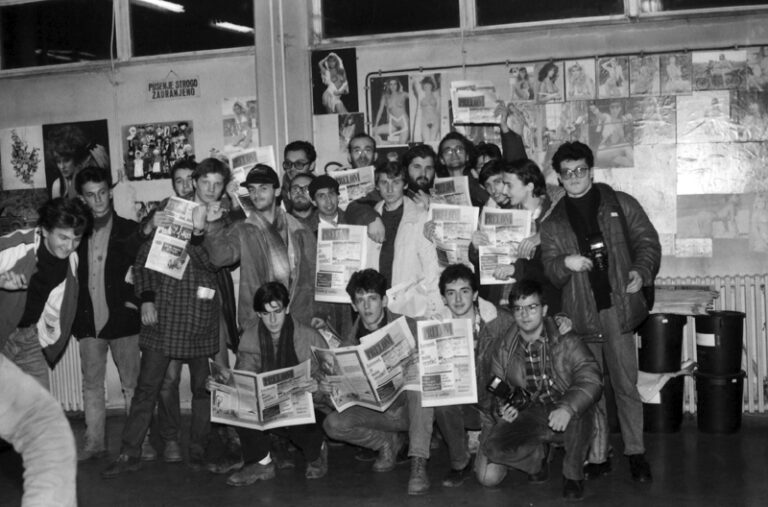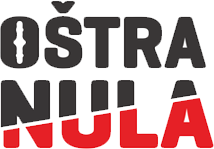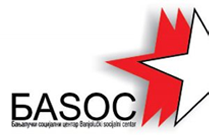When Arif Sitnica, later the technical editor, suggested that the newspaper of the Municipal Conference of the League of Socialist Youth of Banja Luka be named “Prelom” (Break), we had no idea how symbolic it would become with the times ahead. It came to pass that the Socialist Federal Republic of Yugoslavia, a community of once brotherly nations and nationalities, folded and disappeared so harshly, cradled on the ever-restless Balkan soil and chronically ailing — until then, from curable diseases. Along with Yugoslavia, the fates of millions of people were also shattered — people who experienced the horrors of war, incompatible with the values of civilization at the turn of the new millennium. Many of them perished, lost their property, left their ancestral homes, and found themselves scattered across continents, searching for a piece of heaven for themselves. Above all, Bosnia and Herzegovina experienced a three-dimensional disintegration. We wanted to warn about this and help prevent it from happening.
Did we feel at the time that something so bleak, so apocalyptic would happen? Yes, because there was a crisis of ideology and the value system, but we did not believe we could return to the Middle Ages, that men could become each other’s worst enemies. Instead of flourishing on the wings of the digital technological revolution and prosperity — dreams and aspirations of the younger generations — we experienced a downfall, one that will be talked about for a long time but it will never be completely clear by what means and which specific dark forces overcame common sense and empathy, in which every civilization must rest.
The idea of a youth newspaper was part of my program platform for the activities of the League of Socialist Youth of Banja Luka during the 1988-1989 mandate period. However, it took some time for the conditions to be right for LOK (The Youth Paper of Krajina, discontinued in 1974) to gain a worthy successor. The initial announcements of a new youth newspaper in Banja Luka were not well received by the local authorities at the time, represented by the United Coordinating Body (UKT), which consisted of political functionaries in the city, including the youth president. The reasons were quite clear – the youth had started to stand out and disrupt the long-cultivated and superficial harmony of political dialogue, which lacked competition of ideas that could provide solutions to accumulated problems. At that time, youth press in Yugoslavia was a major critic of the system, demanding radical societal changes, as the contradictions eroding the state grew more apparent and burdensome by the day. Ultimately, to borrow an engineering term, such a powerful centrifugal force was created that it tore apart everything shared – even many families that had once been happy.
My fortunate circumstance was that I was elected to the position of president of the youth organization of Banja Luka without the approval of the municipal officials, for the first time through a secret ballot and among multiple candidates. This gave me the right to have the privilege of my own opinion and to persist in my ideas to the end. Thus, instead of the offered supplement in “Glas”, “Prelom” was created. After so many years, I must admit there were unpleasant situations when I was completely alone in my views, in contrast to the majority that governed Banja Luka at the time. The same happened with “Prelom”—it was created against the will and without the support of the political structures.
In order to publish the first issue, we had to go through the usual procedures and secure funding, primarily the initial costs for printing.
Here is some factual background to support this. Although the Presidency of the Youth Committee of the Socialist Youth Organization (OK SSO) of Banja Luka had already made a decision regarding the newspaper, it was necessary to test the idea among Banja Luka journalists and writers. The first official meeting on the topic of a youth newspaper, excluding smaller groups and individual discussions, was held on July 5, 1988, with selected individuals who could contribute to this idea. I will mention some of the participants: Mirko Kisjan, Ilija Durbić, Mladen Ivanić, Goran Kušić, Božo Marić, Fadil Smajić, Milenko Stojičić, and others. Reviewing the notes from the meeting, I must note that there was a considerable degree of caution at that time, but ultimately, full support was given. At the Presidency meeting of the OK SSO held on October 27, the concept and name of the newspaper, the selection of the editorial board, the appointment of the editor-in-chief, and the formation of the newspaper’s advisory council were discussed. Among the proposed names for the newspaper was “Ozon”. During this meeting, the editorial team was selected. Amir Osmančević was chosen as the editor-in-chief, although his brother Samir was the main candidate. Ajnur Islamović was selected as deputy editor, and the first editorial board included Oleg Sladoljev, Mirsad Halilović, Mišo Vidović, Božo Marić, Zlatko Opolcer, Ružica Kasalović, Milutin Lazić, Bernarda Filipović, Slobodan Rašić, Vlado Antonijević, and Predrag Milašinović.
Later, the composition of the editorial board was changed several times, and the list of contributors expanded. Many established journalists, professors, and even beginners who later became skilled journalists contributed their articles to “Prelom”. They deserve gratitude for their work, as most of them worked without any compensation or fees. The only paid position was that of the editor-in-chief, but even he might not have been fully compensated for all his work.
The newspaper council included the following members: Miodrag Živanović (president and later the initiator of “Novi Prelom”), Goran Simić, Nebojša Radmanović, Zekija Haznadar, Marija Škundrić, Ilija Durbić, Rajko Kuzmanović, Muhamed Kulenović, Rajko Kasagić, Slobodan Popović, Nikola Deretić, Anton Kasipović, Milenko Stojičić, Ibrahim Tabaković, Muris Dujsić, Drago Talijan, Mićo Milovanović, Igor Radojičić, Goran Šironjić, and Amir Osmančević. Today, any newspaper would envy such a distinguished council, which provided support to both the editorial team and the founders when needed. It also guided the editorial policy without significant interventionism.
From the beginning, we secured funding to cover the printing costs of the first 10 issues and, as I recall, prepaid Glas printing house. Unfortunately, this turned out to be “Prelom’s” final budget, as the new leadership of the OK SSO in the following term failed to secure additional funds for this purpose. “Prelom” was officially registered in the register of public media on December 13, 1988. The first issue was printed six days later, and the last issue was published in February of the following year. The challenging times and economic conditions in which “Prelom” emerged and continued to be published are evident from the fact that the first issue sold for 1,000.00 dinars, the ninth for 30,000.00 dinars, and the tenth—after the infamous devaluation of the dinar—was priced at 4.00 dinars, which would be approximately 0.57 BAM (DEM) today.
I cannot recall the initial number of copies, but I do know that it quickly stabilized at 10,000, which was remarkable for those times and circumstances. Nearly the entire print run was sold in Gospodska Street, although it was distributed over a wider area. The main distributor was a student, Tvrtko Maračić, who, with humor and inspiration, announced the contents of each new issue using a megaphone. Undoubtedly, this involved some breaches of public order and excessive noise, but no one opposed the energy of a generation demanding changes—changes that, unfortunately, did not materialize. The newspaper stand was set up across from the Pivnica (Brewery, now Citadela), while Tvrtko walked up and down Gospodska Street with his megaphone. He often left the day’s earnings in a cardboard box where he collected the money from sales and never once complained of anything missing. This scene is unimaginable today: no one could generate such public interest and attention, no one would be allowed to sell a newspaper in such a manner, and no one would dare leave an open box of money unattended.
With the first issue of Prelom, I wrote:
“…The long-anticipated and eagerly awaited “Prelom” must be open and uncompromising in its creative pursuit of the new and progressive. It should become a tool for the younger generation to influence social processes as a whole, to fight for the realization and affirmation of the societal role and function of the youth generation, to freely and critically address specific social movements, to present its own identity, expression, and achievements of the young generation, to become a public forum and a pillar of shame, and to become a recognizable newspaper…”
Whether “Prelom” became what we envisioned, even now, after a distance of over 25 years, cannot be judged objectively without illusion. Looking back, I see that we aimed for the impossible—there wasn’t enough strength for the political “Eureka!” that the time demanded. Upon rereading some of the articles, the absence of editorial influence on their content and the complete freedom of authors’ expression becomes evident. Some could even be said to have bordered on polite ethics, but such an approach was appropriate for that era. The editorial policy was free of censorship by the founders, entirely in the hands of the editorial team and the council. The OK SSO didn’t even engage in analyzing the content, not even when “Prelom” faced harsh criticism and polemical disputes. Today, the paradigm towards some issues might be different, but if it all happened again, it would likely unfold in the same way, because it’s hard to fully comprehend the time in which all of this occurred.
At the time, I didn’t even notice that “Prelom” wrote very little about the activities of the OK SSO Presidency, likely due to its desire to broaden its regional significance. Yet it was supposed to be the main promoter of our ideas and initiatives, some of which genuinely deserved public attention. This might be an appropriate place to mention an event that garnered significant public attention throughout Bosnia and Herzegovina and beyond. Namely, the OK SSO Presidency decided to organize a rally for Yugoslav unity in Banja Luka on March 6, 1989, under the slogan “We won’t give up Yugoslavia, we don’t have another one!”. This occurred at a time when rallies in Bosnia and Herzegovina were not even a topic of discussion, let alone something to be organized. The delicate nature of the situation is evident from the fact that the OK SSO Presidency, which usually made decisions by a large majority or unanimously, passed the decision to hold the rally with the smallest possible majority. My vote, as the last to be cast, tipped the balance in favor of the rally. It’s also worth noting that as soon as word spread that “someone in Banja Luka” was organizing a rally, a meeting was quickly convened by the regional intermunicipal officials of the Banja Luka area with the Chairman of the Presidency of Bosnia and Herzegovina, at his initiative. The significance of this meeting is highlighted by the fact that while it was typical to report to Sarajevo, in this instance, the delegation came to Banja Luka to address the matter. Since I was fully occupied with organizing the rally, I didn’t give much importance to this meeting and wasn’t present. During the meeting, the Chairman spent much of the time addressing a young colleague of mine, evidently mistaking him for me. He gave him undue attention, to the point where my colleague could no longer bear it. He stood up in the middle of the discussion and said, “Comrade Nikola (Filipović), I’m not Talijan”. “Prelom” devoted less coverage to this event than the state-controlled press, even though, according to many reports, around 50,000 people attended the rally.
In 2008, on the occasion of the 20th anniversary of the first issue of “Prelom”, a large number of participants from that era and those events gathered at a celebration held in the Assembly Hall of the Banski Dvor in Banja Luka. It was an opportunity to reminisce about the good times and evoke memories of the days of youthful rebellion. On that occasion, a compilation of selected articles was printed as a special issue of “Prelom”. I hope there will be gatherings around future anniversaries as well, because “Prelom” was a battle cry we can be deeply proud of.
This text was written to help those who weren’t contemporaries of “Prelom” understand how it came to be and what we aimed for. We rode the waves of pure ideals, naive in our belief that we could stand up to the emerging regressive elites and the destructive chaos that followed. We remained in a significant minority.
Banja Luka, October 10, 2024
Drago TALIJAN



